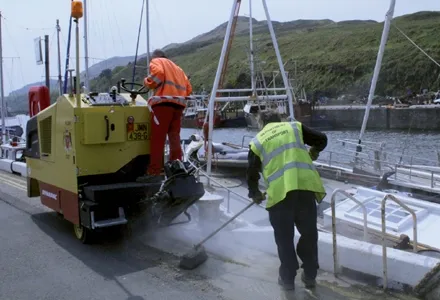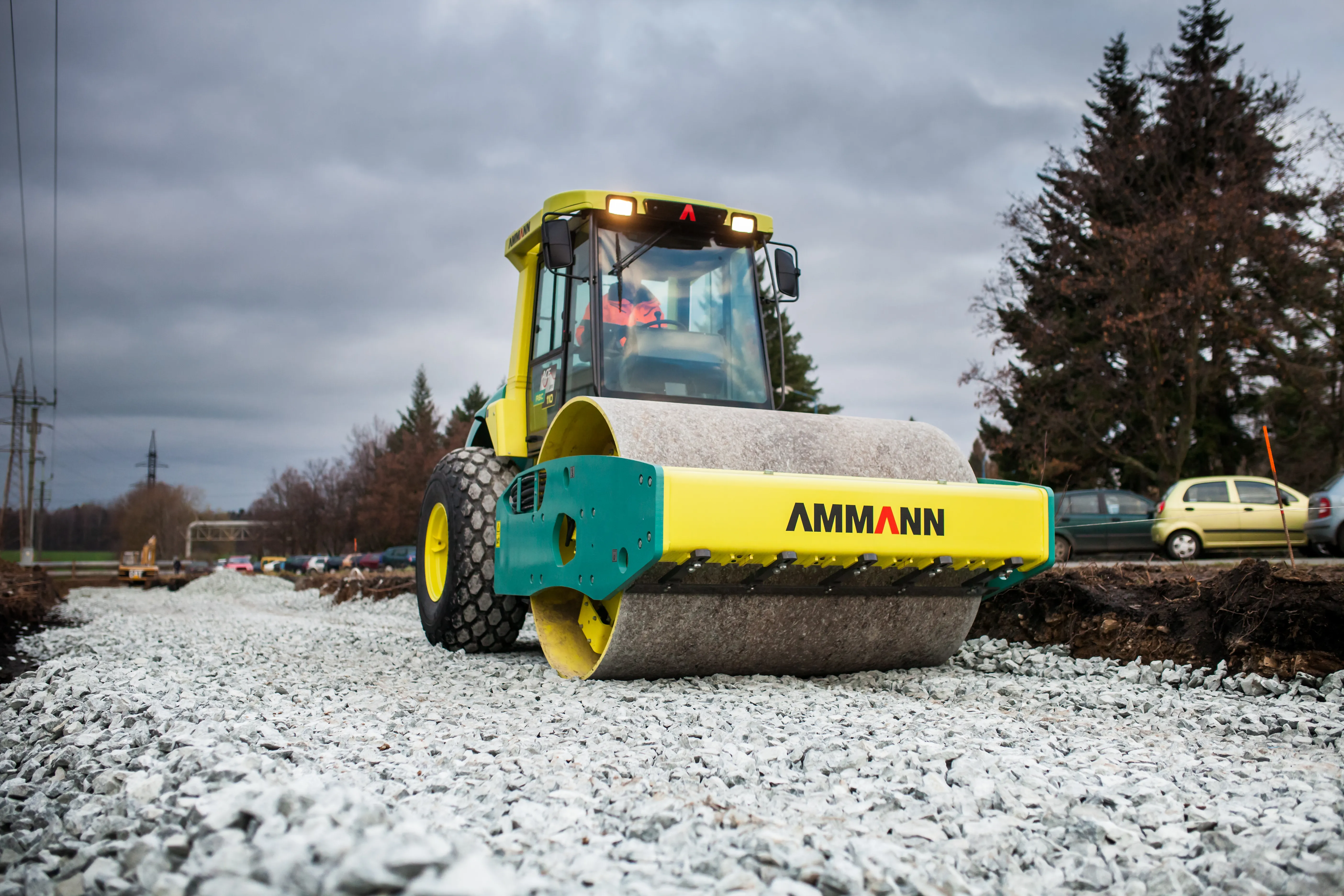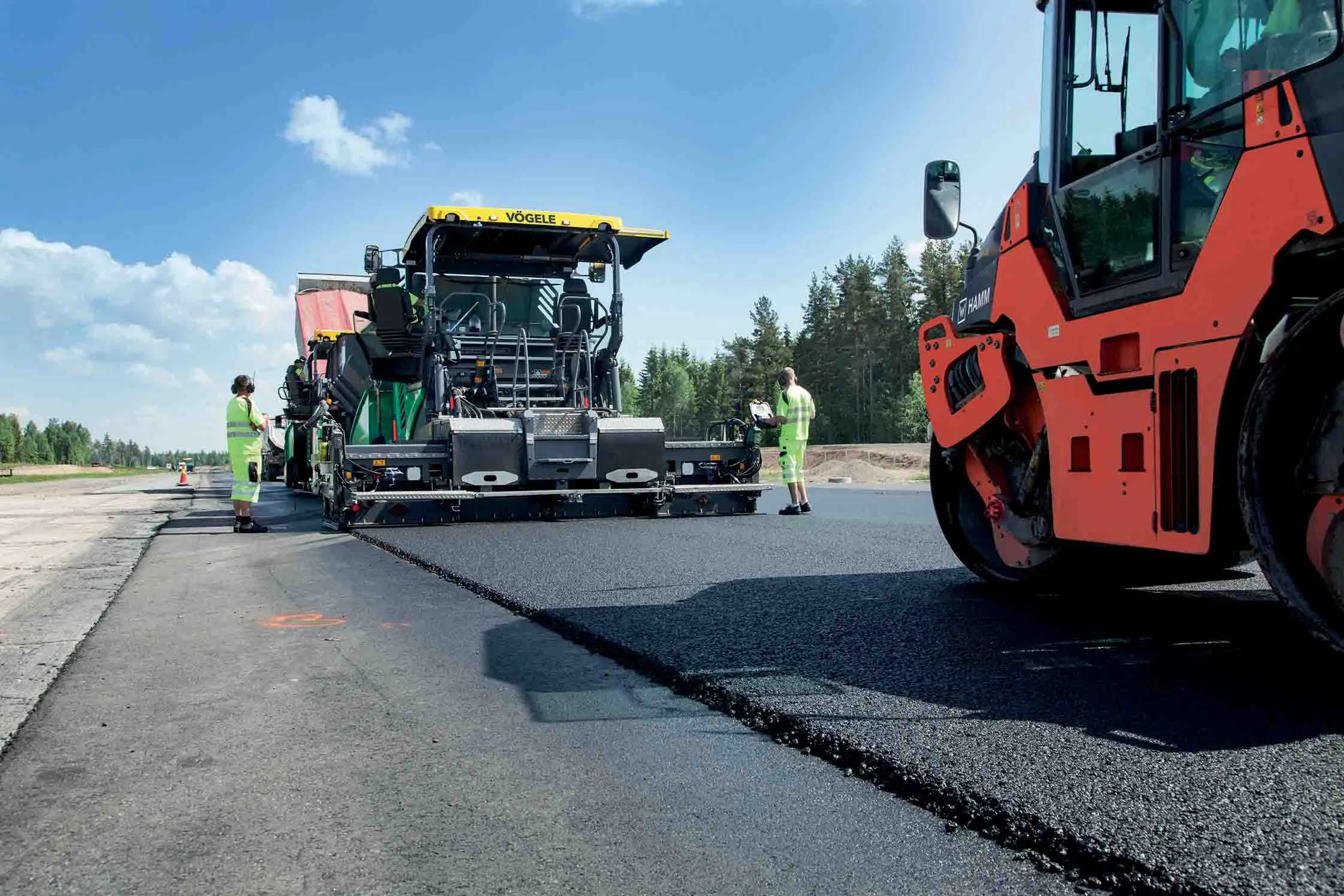A Dynapac PL350T cold planer helped carry out critical demarcation work on the roads used for the famous Isle of Man's TT motorcycle races. It was used to remove the road markings on the isle in the Irish Sea in readiness for the races. The Dynapac machine is equipped with a special micro milling drum which contains 117 bits, compared to the standard 38, spaced at intervals of 3mm as opposed to the conventional 12mm. In addition, to avoid a sharp edge at the sides of the demarcation area, the drum is slight
July 30, 2012
Read time: 2 mins

A 206 Dynapac PL350T cold planer helped carry out critical demarcation work on the roads used for the famous Isle of Man's TT motorcycle races. It was used to remove the road markings on the isle in the Irish Sea
in readiness for the races. The Dynapac machine is equipped with a special micro milling drum which contains 117 bits, compared to the standard 38, spaced at intervals of 3mm as opposed to the conventional 12mm.
In addition, to avoid a sharp edge at the sides of the demarcation area, the drum is slightly offset by 1 or 2mm at the edges, although very flat across its 300mm surface. This is essential to avoid any danger to the high-speed bikes.
The planer's additional 600kg of ballast on top of the cutter housing ensures the minimum vibration during milling operations and a much smoother and uniform result.
According to the isle's Department of Transport (DOT) maintenance team, other drums with smaller diameters cannot use the standard bit system, which means the Dynapac bits last approximately four times longer than competing drums as they have to use mini-bits.
The machine offers a huge increase in productivity over the previous and labour-intensive method used for line removal with standard blasting equipment.
The TT fortnight attracts around 40,000 visitors/year, takes months to plan, not least by the island's DOT, both in securing the route for bikes, which hit speeds of over 300km/h, and in ensuring the safety of both riders and spectators. House-fronts, walls, lamp-posts and safety barriers are all protected with air fencing and roundabouts are removed along the highly demanding 60km route.
in readiness for the races. The Dynapac machine is equipped with a special micro milling drum which contains 117 bits, compared to the standard 38, spaced at intervals of 3mm as opposed to the conventional 12mm.
In addition, to avoid a sharp edge at the sides of the demarcation area, the drum is slightly offset by 1 or 2mm at the edges, although very flat across its 300mm surface. This is essential to avoid any danger to the high-speed bikes.
The planer's additional 600kg of ballast on top of the cutter housing ensures the minimum vibration during milling operations and a much smoother and uniform result.
According to the isle's Department of Transport (DOT) maintenance team, other drums with smaller diameters cannot use the standard bit system, which means the Dynapac bits last approximately four times longer than competing drums as they have to use mini-bits.
The machine offers a huge increase in productivity over the previous and labour-intensive method used for line removal with standard blasting equipment.
The TT fortnight attracts around 40,000 visitors/year, takes months to plan, not least by the island's DOT, both in securing the route for bikes, which hit speeds of over 300km/h, and in ensuring the safety of both riders and spectators. House-fronts, walls, lamp-posts and safety barriers are all protected with air fencing and roundabouts are removed along the highly demanding 60km route.








